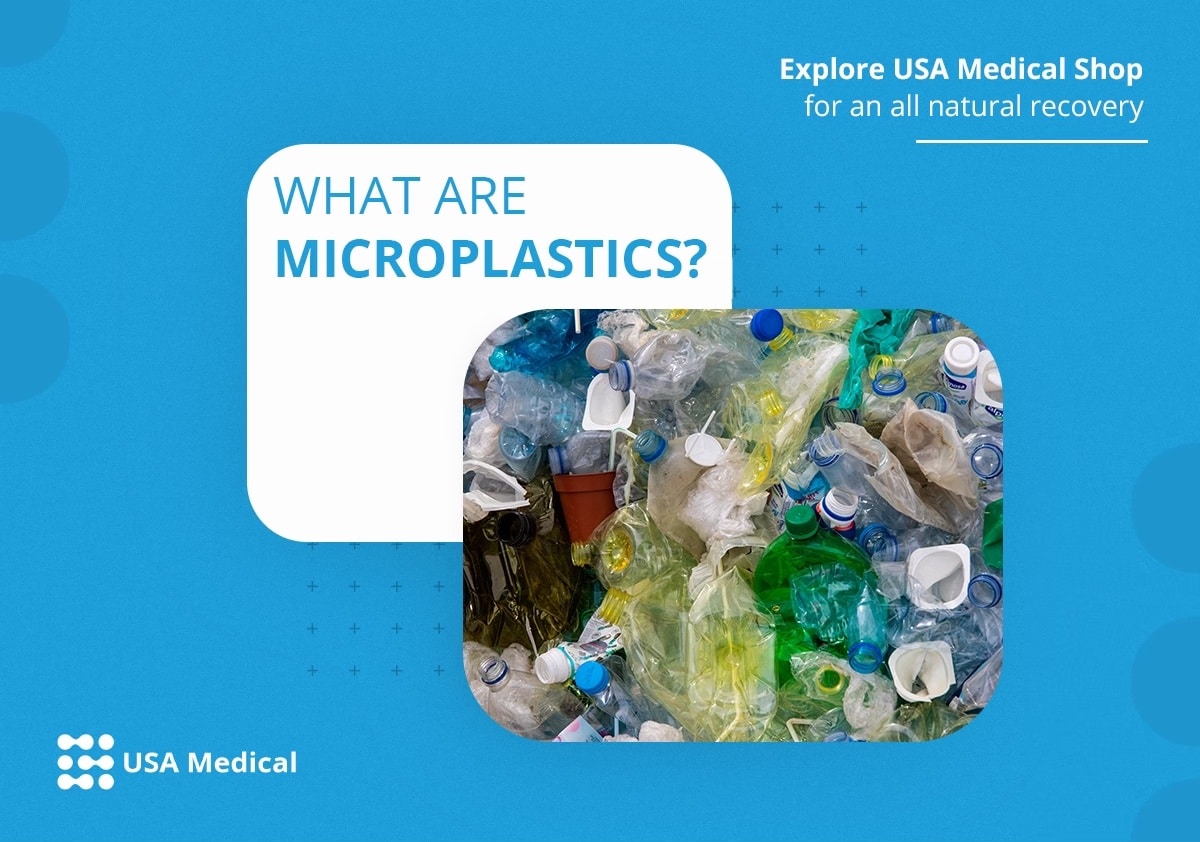
What Is CBG Oil?
If you’re looking for a comprehensive, natural solution to tackle inflammation and its debilitating effects, you’re in the right place. Welcome to the new era

Jake Crossman, Richard Gibson
The word “microplastics” has been a buzzword in the recent news for the past couple of years – but the exact reason why microplastics are a problem seems to be evasive.
Current research shows that microplastics have made their way just about everywhere on earth, but what does that mean for you?
This blog is going to discuss exactly what microplastics are, how they impact us, and what we can do collectively to help prevent any further damage from being done.
Microplastics are small pieces of plastic less than five millimeters in length that can be potentially harmful to our environment and our own bodies. There are two different kinds of microplastics one of which has been banned from being made in 2015 which are plastic pellets used in personal items.
One of the main issues with microplastics is their longevity. Plastic is not able to decompose and will presumably just remain on the earth permanently. Because of this the amount of plastic floating around in the oceans is now starting to affect the food chain and is getting ingested by humans without us even realizing it.
Scientists are now finding microplastics are not only in the oceans but in the air as well swirling around as small dust particulates. In the year 2015, an estimated 8.8 million tons of garbage was deposited into the ocean. This number has only gone up since then and impacts the food chain, and the water cycle as well with microplastics being found in rain and water (National Geographic).
Microplastics are now everywhere – and there doesn’t seem to be a way to control the damage that has already been done, but how much do they really impact our day-to-day?
As the research on microplastics continues, the findings about just how large of an issue these plastics are continues to grow.
Ingesting plastic, no matter the scale is presumably not a good thing for anyone to do. However, a recent study by the Medical University of Vienna said that heavy plastic users are potentially consuming a credit card’s worth of microplastics a week.
This is an issue – let’s dive into the certain areas of life that microplastics are drastically impacting and if there is any way to reverse the damage that has already been done.
The biggest threat that microplastics pose to humans is the toxicological effects that ingesting plastic has. Toxicology is the science of understanding how certain chemicals and substances can harm the human body – so eating tiny microplastics on a daily basis will eventually have a negative outcome on humans.
One of the more concerning toxicological threats to humans from microplastics is the oxidative stress created as your body has an incredibly difficult time filtering out microplastics you ingest, which can trigger inflammation and other health issues.
This is from research that was published in 2014. It’s safe to assume this problem has only worsened since then. The good news is, there are simple steps you can take to avoid microplastics, which we discuss further down in the article.
Consuming microplastics can also affect your body’s ability to fight diseases. Plastics in general are fairly toxic products – having them inside of you will weaken your body’s immune response and can increase the risk of disease.
The research is not entirely sound on just what kind of immune response your body will eventually have but there is enough evidence to support that inhaling microplastics in the environment will definitely have an impact on our immune systems.
Microplastics pose a serious threat, so what can we do?
Small changes in your daily life dedicated to avoiding plastic will be all the defense you need against microplastics in your own life. Make sure to:
These suggestions are small in comparison to the potential damage of microplastics, so consider if you have the ability to make these changes in your life!
While microplastics pose a real threat to all life on earth, there isn’t much you can do on a day-to-day basis to stop the spread aside from limiting your use of plastic and spreading the word, so don’t stress over it.
Eat nutritious, organic food, cook them in non-plastic cooking equipment, and drink out of non-plastic cups to seriously reduce your risk of microplastics in your life.
Works Cited
Parker, Laura. “Microplastics Have Moved into Virtually Every Crevice on Earth.” Science, National Geographic, 3 May 2021, https://www.nationalgeographic.com/science/article/microplastics-in-virtually-every-crevice-on-earth.
Katanich, Doloresz. “You Eat a Credit Card’s Worth of Plastic Every Week, Says a New Study.” Euronews, 11 Apr. 2022, https://www.euronews.com/green/2022/04/11/how-much-plastic-do-you-eat-it-could-be-as-much-as-a-credit-card-a-week.
Bhuyan, Md. Simul. “Effects of Microplastics on Fish and in Human Health.” Frontiers, Frontiers, 1 Jan. 1AD, https://www.frontiersin.org/articles/10.3389/fenvs.2022.827289/full.
“How Does Plastic Get into the Ocean?” IFAW, https://www.ifaw.org/journal/plastic-pollution-ocean?ms=UONDC230037102&gclid=Cj0KCQiAsdKbBhDHARIsANJ6-jewZpk8AMQorJfTohd_ao07tEZuX2gxjBKri4QTKzZ741vMcVwEBFcaAm4OEALw_wcB.

In stock | Free shipping

In stock | Free shipping

In stock | Free shipping

In stock | Free shipping
These statements have not been evaluated by the Food and Drug Administration. These products/services are not intended to diagnose, treat, cure, or prevent any disease.

If you’re looking for a comprehensive, natural solution to tackle inflammation and its debilitating effects, you’re in the right place. Welcome to the new era

The Invisible Enemy Within You wake up feeling groggy, your joints ache, and that old neck pain seems to have returned. No, it’s not just

CBG oil has been creating waves in the health and wellness industry, and for good reasons. But with any health trend, it’s crucial to separate

In stock | Free shipping

In stock | Free shipping

In stock | Free shipping

In stock | Free shipping

In stock | Free shipping

In stock | Free shipping

In stock | Free shipping

In stock | Free shipping

In stock | Free shipping

In stock | Free shipping

In stock | Free shipping

In stock | Free shipping

In stock | Free shipping

In stock | Free shipping

In stock | Free shipping